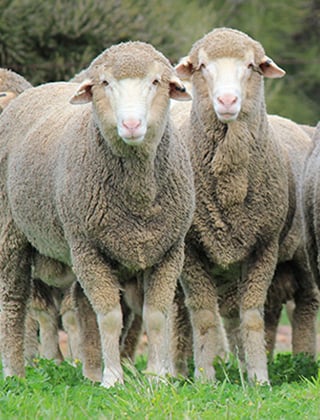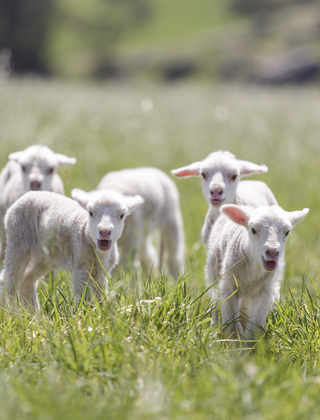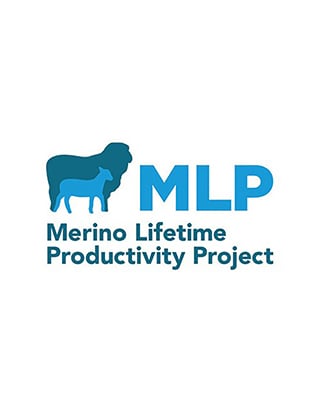Unlocking genetic potential: the importance of quality raw data in breeding
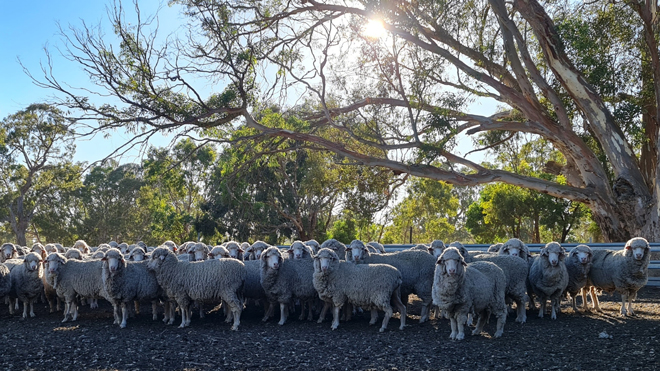
The quality of raw data from parents and their progeny remains fundamental to assessing the genetic merit of sheep. The MLP project adhered to data collection protocols needed to assess sheep classing and breeding value outcomes.
MLP QUICK FACTS
The AWI-funded MLP project is a $13 million ($8 million from AWI plus $5 million from project partners), 10-year venture between AWI, the Australian Merino Sire Evaluation Association (AMSEA), nominating stud Merino breeders and site partners.
- Balmoral, Vic
Partner: Tuloona Pastoral
Committee: Balmoral Breeders Association - Pingelly, WA
Partner: Murdoch University/UWA
Committee: Federation of Performance Sheep Breeders (WA Branch) - MerinoLink, Temora, NSW
Partner: Moses & Son
Committee: MerinoLink Limited - Macquarie, Trangie, NSW
Partner: NSW DPIRD
Committee: Macquarie Sire Evaluation Association - New England, NSW
Partner: CSIRO
Committee: New England Merino Sire Evaluation Association
The MLP project has tracked the lifetime performance of 5,700 ewes as they proceeded through four to five joinings and annual shearings.
A full suite of assessments has been taken on the ewes including visual trait scoring, classer gradings, objective assessments of a range of key traits and index evaluations along with a DNA genotype at the start and end the of their lives.
A unique and extensive dataset has been created that is being used to enhance existing Merino breeding and selection strategies, for both ram sellers and buyers, to deliver greater lifetime productivity and woolgrower returns now and into the future.
To stay up to date with the latest MLP findings, visit www.wool.com/MLP. Subscribe to MLP updates via www.merinosuperiorsires.com.au/contact-us.
In the world of Merino breeding, there is an important distinction between raw data, visual scores and Breeding Values. Raw data (both measured and visual) is an assessment of the performance of an individual animal relative to the mob. While Breeding Values are a predictive assessment that estimates how an individual animal’s progeny will perform relatively across sites. Yet visual assessments (scoring or classing) and breeding value assessments both rely on good management and data protocols, so any assessment reflects as much as possible the genetic differences between animals.
Breeding Values are calculated using genetic models that at minimum incorporate raw data, but if available also include pedigree records, adjustment factors such as birth date, birth type and rear type, and genomic results. The assumptions used in creating these Breeding Values have been validated with parent and progeny data and continue to be refined to provide the most accurate indicators of how progeny will relatively perform (genetic potential).
Critically, the success of Breeding Values depends on quality protocols, as do classing outcomes.
The significance of accurate raw data collection
Raw data must be collected under strict management and protocol guidelines to maximise its value. The closer these protocols are followed, the more valuable the raw data becomes for any form of assessment. Relative assessments become more repeatable across years, they are more indicative of lifetime performance, and they directly influence the predictive accuracy of progeny performance. If past assessments (either classing or Breeding Values) fail to align with the current performance or actual progeny performance, the first step should be to review whether quality assessment protocols were properly followed.
Key protocols to obtain quality assessments, either raw data, classing or Breeding Values, include:
- a structured five-week joining period, the shorter the better
- measuring the entire drop or as close to it as possible
- distinguishing between maiden and mixed-age dams
- recording birth and rear type (single or twin)
- maintaining large management groups with as few as possible sub divisions (that are linked).
Conversely, common failures in assessment collection protocols include:
- failing to account for mob management differences
- preferential feeding or long lambing periods (e.g. AI and ET progeny)
- measuring at very young ages
- short wool growth periods (less than six months)
- inaccurate weight measurements due to poor taring of scales
- culling too many animals before raw data collection or classing
- incomplete or incorrect pedigree records or tag reading.
Poor protocols impact the reliability of raw data, visual classing and Breeding Values.
The relationship between heritability and Breeding Values
The relationship between raw data and Breeding Values is influenced by heritability, which measures how much of a trait’s variation in progeny is due to genetic merit of the parents. For example, when protocols are followed:
- Fibre diameter has a heritability of 60%, meaning 60% of the variation in progeny is due to the genetic merit of the parents, while 40% is due to unknown environmental factors.
- Fleece weight has a heritability of 35%, indicating moderate genetic influence.
- Weaning rate has a much lower heritability of 5%, meaning only 5% of the variation in progeny is due to the merit of the parents and 95% is due to unknown environmental influences.
If protocols are not followed, heritability quickly declines, making classing and Breeding Values less reliable. For example, if protocols are not followed, only 5% to 10% of the variation in progeny fleece weight may be attributed to the genetic merit of the parents, compared to 35% when proper protocols are in place. This impacts the rate of genetic gain across generations.
While highly heritable traits offer faster genetic gains, progress can still be made in lowly heritable traits when there is significant variation to select from.
MLP results are showing that rising 2 year old Breeding Values are more accurate than 1 year old Breeding Values; similarly, visual classing results are more accurate at rising 2 year old than at 1 year old, but both come with additional costs. Understanding these dynamics allows breeders to prioritise traits and balance genetic improvement with practical, on-farm realities and optimise genetic gain.
MLP project insights
The MLP project adhered to high-quality data collection protocols, allowing an assessment of how raw performance data contributes to Breeding Values.
Table 1 below shows the correlation between the average raw lifetime performance data of Clean Fleece Weight (CFW), Fibre Diameter (FD), Staple Strength (SS), Body Weight (WT), and Weaning Rate (WR) with the MLP ewes’ Adult (A) Breeding Values (ASBVs). The ASBVs were calculated using all available data from the project along with genotypes.
The findings showed a strong correlation between ewes’ average raw lifetime performance and their Australian Sheep Breeding Values (ASBVs).
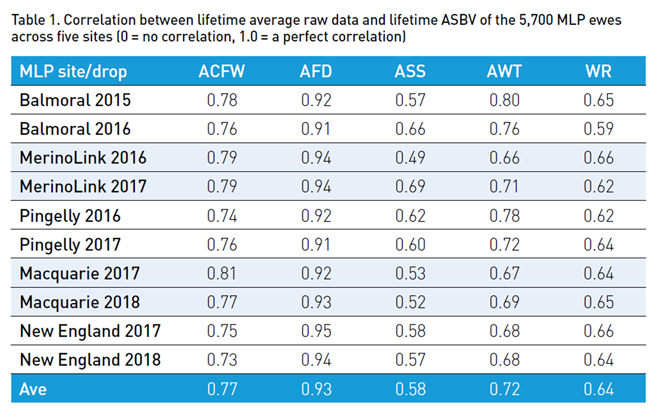
Age and lifetime performance predictions
Previous research has demonstrated that raw fleece data and Breeding Values collected at one and preferably two years of age can be good indicators of lifetime fleece performance and progeny performance. However, exceptions arise (see Graph 1) – particularly among later-maturing animals, where early performance metrics may not fully reflect their genetic potential. Addressing this challenge is a key research focus within the MLP project, aiming to refine predictive models for such animals so that Breeding Values created from young raw data can be better predictors of how progeny will perform for as many animals as possible.
The first step toward genetic gain
The journey to achieving optimal genetic progress begins with collecting high-quality raw data, both measured and visual. By adhering to rigorous data collection and assessment protocols and understanding the nuances of heritability, breeders can optimise both the power of visual classing, raw data and the predictive power of Breeding Values. This, in turn, ensures more effective selection decisions using all assessments, leading to improved livestock performance and greater overall genetic improvement.
Graph 1 shows an example of a scatter graph comparing MLP ewes’ actual lifetime average fleece weight with their ASBVs for the Macquarie 2018 drop ewes. While the correlations are strong there are outliers which the MLP project is trying to address.
Tribute to Professor Andrew Swan
The success of Sire Evaluation and the MLP project owes much to the contributions of Professor Andrew Swan, who tragically passed away on 14 December following a road accident while cycling near Armidale. A highly respected geneticist, Professor Swan – or Swanny, as he was affectionately known – played a pivotal role in shaping genetic evaluation methodologies, ensuring the robustness of site results, and laying the foundation for whole-MLP project analysis. His expertise, passion, calm clear thinking, straight talking and unwavering commitment left an indelible mark on the field of genetic evaluation and on all who had the privilege of working alongside him. Swanny’s legacy will continue to inspire genetic improvement in Merinos for generations to come, and he will be deeply missed.
This article appeared in the Autumn 2025 edition of AWI’s Beyond the Bale magazine that was published in March 2025. Reproduction of the article is encouraged.






